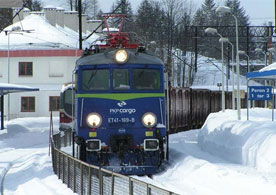One year on: ISAF’s trans-European supply routes are a success
Today, some 40 per cent of all cargo destined for the NATO-led International Security Assistance Force (ISAF) enters Afghanistan by rail through northern and central Lines of Communication (LOC). The remainder is shipped through Pakistan or directly flown into Afghanistan. This is a remarkable success considering that it was only a year ago that the first train with non-lethal cargo for ISAF departed Latvia for Afghanistan, making use of the new northern rail route through Belarus, Russia, Kazakhstan and Uzbekistan.


The benefits speak for themselves: the use of the rail route costs approximately 10 per cent of the equivalent for movement by air. Moreover, for many ISAF Troop Contributing Nations, the northern and central routes are more direct than using the southern surface transport route through Pakistan.
Work has continued over the past year to improve the means by which non-lethal cargo for ISAF is moved in and out of Afghanistan. Existing arrangements with a number of European and Central Asian countries for the transit of cargo were amended and improved to complete a reverse transit route for all types of non-lethal cargo, including construction material, general domestic stores, timber and housing containers. These reverse transit arrangements are also very important to facilitate the rotation of forces and return of damaged equipment or equipment requiring major overhaul.
ISAF Troop Contributing Nations are able to operate under either their own bilateral arrangements with the transit countries concerned or use overarching NATO arrangements.
Multinational coordination of ISAF transit is performed by the Allied Movement Coordination Centre in Mons, Belgium, and the Movement Coordination Centre Europe in Eindhoven, the Netherlands. Latvia also plays a key role in coordinating movement with Russia and Central Asian partners.
While rail movement continues to play a significant role in the overall success of the ISAF northern route, NATO is now looking at a more multi-modal transport network, using a mix of rail, road and air movement, to provide optimum efficiency, reliability and flexibility.
